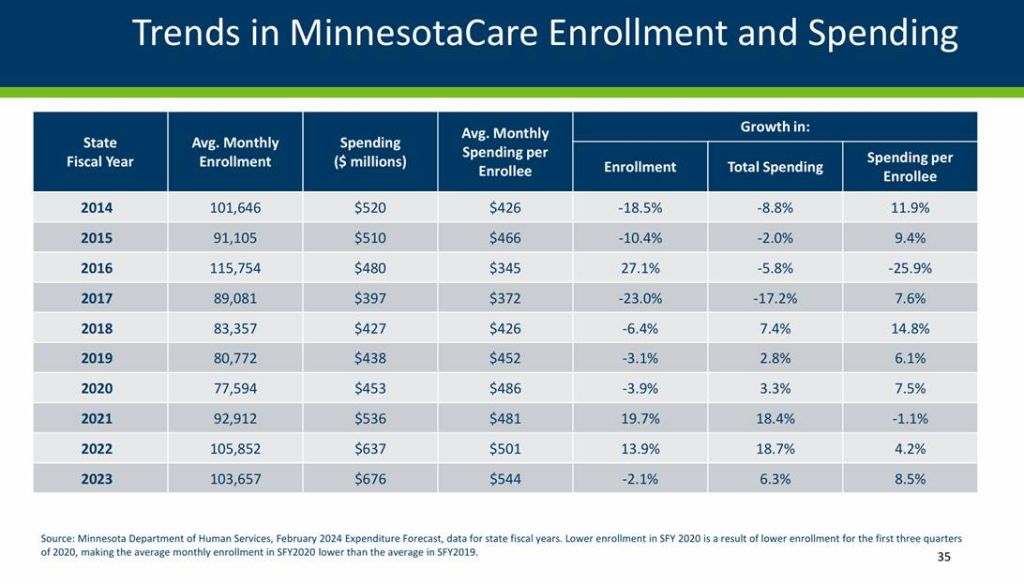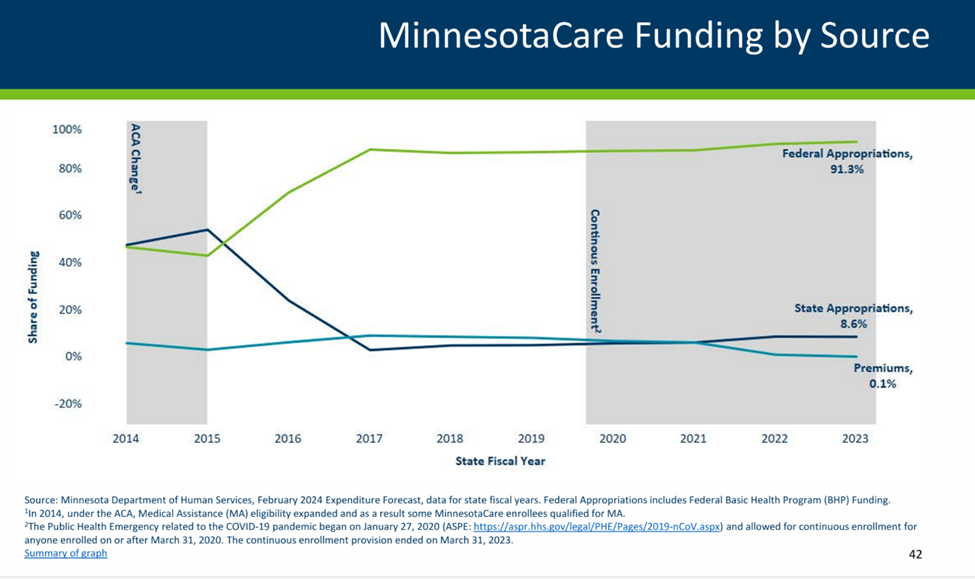- According to a new estimate, Minnesota will spend more on MinnesotaCare for illegals than the Dept of Veterans Affairs will spend on health care for vets in 2025
- Premiums make up less than 1% of MinnesotaCare revenue
- MinnesotaCare must somehow segregate federal money from enrollees not legally present in the country
Republicans and Democrats point to health care as the major sticking point in the current government shutdown. Republicans contend that the democrats are shutting down government to pay for illegal aliens to get health care. Democrats contend health care for undocumented immigrants is a human right and the actual cost to the state of not providing free health insurance is higher than doing so, but taxpayer funds are prohibited from paying for this already.
In Minnesota, however, there is very little debate about the fact that at least 20,000 foreign nationals without legal citizenship are currently on taxpayer-funded MinnesotaCare and that will remain through the New Year. The actual cost of that care is not being reported, but it sure seems like a good thing to know what that is if we are going to debate whether it’s a good idea.
House GOP members say it would cost “a half a billion dollars” while the Governor’s budget pegs the cost at around $30 million/year (the state scored $57 million in savings for eliminating the program for 15,000 people). There is no definitive cost analysis on this, so let’s do some basic math.
Put the current number of illegal aliens on MinnesotaCare at 20,000. For the sake of analysis, we will spread the cost equally across adults and children. To be conservative, let’s assume all 17,000 that were signed up for care in April had no care in the first quarter. Also assume that the other 3,000 will only receive six months of coverage.
17,000 members (9 months) = 153,000 months of coverage
3,000 members (6 months) = 18,000 months of coverage
Total 171,000 months of coverage for 2025
The average per/member/month cost of coverage for MinnesotaCare in 2025 is a little over $600/month. That works out to $103,600,000 for one year of coverage with new enrollment stopped halfway through the year. Because all of this is state funding (federal funds cannot be used for illegal aliens’ care) a fee-for-service billing system is being used as opposed to a capped contract amount. Fee-for-service funding is more expensive, so the $104 million number is likely significantly higher, but let us conservatively estimate the cost of care for illegal aliens on MinnesotaCare in 2025 to be $104 million. This does not include the cost of providing uncompensated care through the hospitals and clinics, or Emergency Medicaid services offered to illegal noncitizens.

The good news for Gov Walz is that he will save significantly more than $57 million by eliminating two years of full funding for 15,000 enrollees. Assuming the enrollment was capped at the number currently enrolled: 15,000 members (24 months) = 360,000 months ($600/month) = $216 million (not $57 million).
To put that into perspective, the base funding for Minnesota Dept. of Veterans Health Care spending in 2025 was passed in the same 2023 budget that enacted MinnesotaCare for illegal aliens. $100,797,000 was appropriated for 2025.

Source 2023 MDVA omnibus budget: https://www.revisor.mn.gov/laws/2023/0/38/
Minnesota will spend more money funding health care for illegal aliens than it appropriated for veterans health care in the same year through the Minnesota Department of Veterans Affairs.
The Department of Veterans Affairs’ health care appropriation pays for priorities like the Veterans Homes for elderly Minnesota heroes, suicide prevention, and other grants addressing food insecurity, and homelessness for our Vets. Their health care insurance is separate, but this really says something about priorities when we have statewide problems with veteran mental health, homelessness and addiction.
MinnesotaCare was begun in the early 1990s to provide affordable insurance for low-income families with children. When Medicaid expanded to include basically everyone who was previously on MinnesotaCare, the program (thanks to a 2.0% sick tax that fed it) began showing a huge surplus.
That expanded the program to include more middle-income folks, and proposals were made to expand MinnesotaCare to include illegal aliens and even rich people who wanted to pay a premium. The bill to expand to illegal aliens was passed and signed into law in 2023 and then cut back to exclude adults after 2026 due to the popularity of free stuff. Enrollment was 400% of expectation in just the first four months.
Isn’t MinnesotaCare a premium-supported insurance program?
MinnesotaCare was designed as a premium-supported insurance plan that would fill the gap for low-cost health plans. But as it turns out, the state is really bad at collecting premiums. In 2023, DHS waved all money due to MinnesotaCare by policy holders. It also cancelled or reduced premiums and committed to return any money recently paid to MinnesotaCare. That’s not new. In 2018, the state was owed $30 million in unpaid MinnesotaCare premiums, but decided it was too hard to collect, so they forgave all that money too.
99% of all operating money in MinnesotaCare is provided by the taxpayer, and to describe the program as anything other than a taxpayer-supported program is inaccurate.

Federal funds are prohibited from being spent on health care for illegal aliens, so all the money spent to care for the 20,000 must be from state-only sources. Co-mingling state and federal tax revenues in the same fund that pays for federally ineligible enrollees could be risky for a state with so many programs depending on the federal government’s ongoing conditional approval.
All but two democrats in the Minnesota legislature voted to keep the program to pay for MinnesotaCare for illegal aliens over 18. It was a major fissure in the budget negotiations, and many predict the pressure to restore that funding will be significant.










